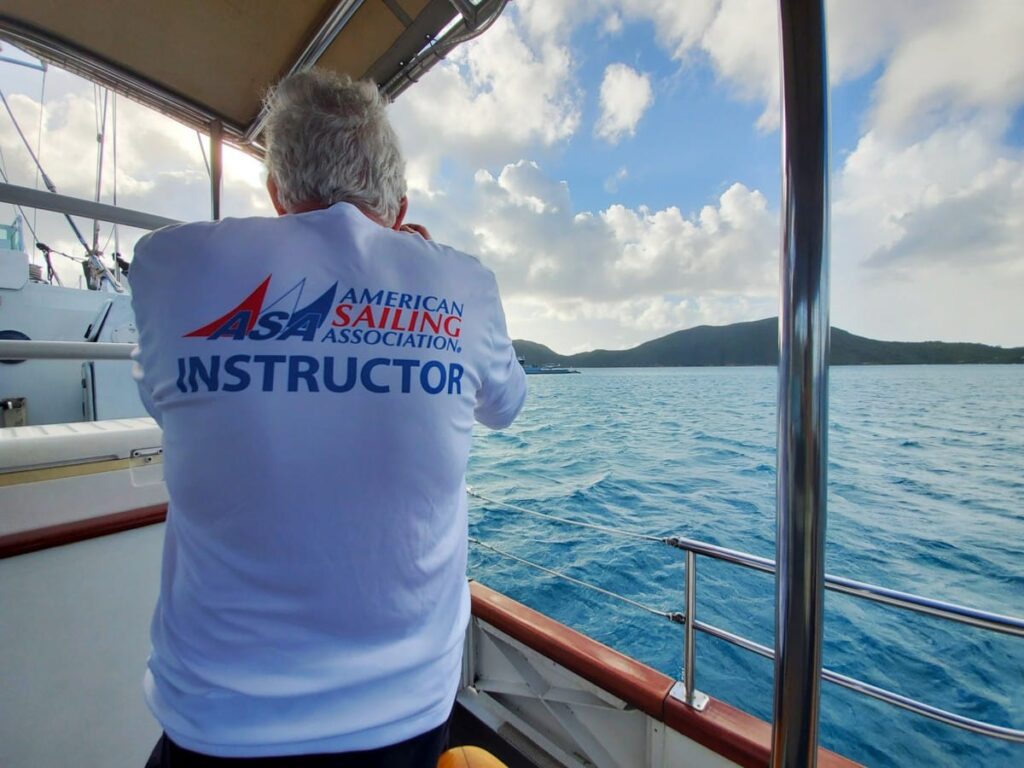“Every vessel shall at all times maintain a proper lookout by sight and hearing as well as by all means available appropriate in the prevailing circumstances and conditions so as to make a full appraisal of the situation and of the risk of collision.” – Rule 5 from the Navigation Rules (International-Inland) from the U.S. Department of Homeland Security United States Coast Guard
The Navigation Rules apply equally to every vessel on the water. While they differ slightly in inland waters from international waters, and even to some degree under local jurisdictions, The Lookout Rule applies everywhere and you can begin observing it on your very first sail.
Under rule 5, every skipper has an obligation to be aware of what is going on all around the boat at all times. If, in the event of an accident, the authorities determine that rule 5 was not followed (due to an absence of crew on deck, inattention to surroundings or prevailing conditions, or distractions), that vessel could be found wholly at fault and legally responsible for all losses and damages.
Is Music Distracting?
Rule 5 refers to “sight and hearing.” That means that as well as looking out for other vessels and hazards, the helmsman and crew should also listen for sound signals and voice hails from other boats. So, while a little music can add to the pleasure of sailing, be aware that too much volume can create a dangerous distraction.

Watching Other Craft
According to the Navigation Rules, whenever the possibility exists of a collision between two vessels, one is the stand-on vessel and the other is the give-way vessel. The stand-on vessel must maintain it’s course and speed and the give-way vessel must maneuver in a safe and seamanlike way so as to avoid a collision. It is the skipper’s job to determine whether the vessel is the stand-on or give-way vessel when encountering other vessels.
Important Notes:
The term “vessel” is used in Navigation Rules, and it encompasses everything afloat, from a kayak or PWC to an aircraft carrier. All Skippers of all vessels bear equal responsibility under the rules, regardless of size or armament.
A sailboat with its auxiliary engine running and in gear is considered a power-driven vessel. As such, it must obey the rules as they apply to a power-driven vessel not a sailing vessel.
These tips come from Sailing Made Easy: The Official Manual for the ASA Basic Keelboat Sailing Course (ASA 101)
ASA 101, Basic Keelboat Sailing Learn to skipper a 20' - 27' sloop-rigged keelboat by day, in light to moderate winds and sea conditions. Learn basic sailing terminology, parts and functions, helm commands, basic sail trim, points of sail, buoyage, seamanship and safety including basic navigation rules to avoid collisions and hazards. ASA 103, Basic Coastal Cruising Learn to skipper a sloop-rigged auxiliary powered 25'-35' keelboat by day in moderate winds and sea conditions. Learn cruising sailboat terminology, basic boat systems, auxiliary engine operation, docking procedures, intermediate sail trim, navigation rules, basic coastal navigation, anchoring, weather, safety and seamanship.
Keen to get started?
- Take our free online sailing course – it’s easy and fun and you’ll learn all about the world of sailing, one that some see as a sport and others choose as a lifestyle.
- Read about our ASA Certifications our accredited schools teach to sailing enthusiasts.
- Find a Sailing School and take sailing lessons to improve your sailing skills.








